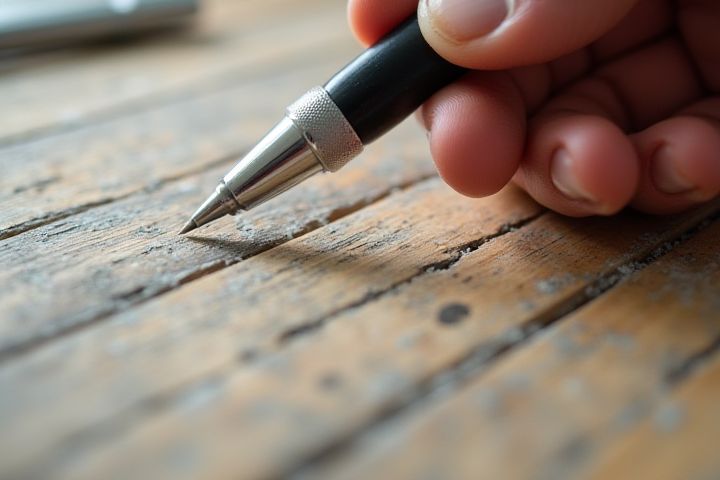
A house inspection includes a thorough examination of critical components such as the roof, foundation, plumbing, electrical systems, HVAC units, and structural integrity. Inspectors assess the condition of walls, windows, and doors to identify potential issues like water damage or pest infestations. They also examine safety features, including smoke detectors and carbon monoxide alarms, ensuring they meet local codes. The inspection report provides detailed findings, highlighting any repairs needed, which can influence your buying decision. Understanding these elements helps you make informed choices about potential property investments.
What Is Included In A House Inspection
Structural integrity
A house inspection focused on structural integrity assesses key components such as the foundation, framing, and roofing system. Inspectors evaluate the foundation for cracks, settling, or moisture intrusion, which can indicate serious issues. The framing is examined for signs of warping, sagging, or termite damage, all of which can compromise the building's stability. Lastly, the roofing system is inspected for signs of wear, missing shingles, or structural damage, ensuring that it can adequately protect the home from the elements.
Roof condition
A house inspection thoroughly evaluates the roof's condition, examining factors such as the material type, age, and overall wear. Inspectors look for signs of leaks, missing shingles, and water damage, assessing the integrity of flashing and chimney seals. Additionally, they check for adequate ventilation and insulation that can affect roof lifespan. You can expect a detailed report highlighting any necessary repairs or replacements, ensuring your investment remains protected from future weather-related issues.
Electrical systems
A house inspection for electrical systems thoroughly evaluates the entire electrical infrastructure, including the main service panel, circuit breakers, and wiring to ensure safety and functionality. Inspectors check for proper grounding, adequate amperage, and the presence of any outdated or damaged components that could pose hazards. Additionally, they assess outlet placements, ensuring they are properly grounded and equipped with ground fault circuit interrupters (GFCIs) in wet areas. By identifying issues like overloaded circuits or improper connections, you can take informed steps to enhance your home's electrical safety and efficiency.
Plumbing systems
A house inspection of plumbing systems typically examines the pipes, fixtures, and water supply lines for any signs of leaks, corrosion, or damage. Inspectors evaluate the water pressure and drainage efficiency, ensuring that both hot and cold water systems function properly. They also assess the condition of the water heater, checking for any issues such as sediment buildup or insufficient capacity. Furthermore, the inspection includes verifying the integrity of the sewer line and the presence of adequate venting to prevent harmful gases from entering your living spaces.
Heating, ventilation, and air conditioning
A house inspection's examination of heating, ventilation, and air conditioning (HVAC) includes a thorough assessment of the furnace, air conditioning units, ductwork, and ventilation systems. Inspectors evaluate the efficiency of heating systems, checking for proper operation, safety features, and signs of wear or corrosion. Ventilation is scrutinized for adequate airflow, ensuring that areas such as attics and crawl spaces are properly ventilated to prevent moisture buildup. Air conditioning components are inspected for refrigerant levels, compressor functionality, and the condition of filters, ensuring your home achieves optimal climate control and energy efficiency.
Insulation and ventilation
A comprehensive house inspection involves a thorough evaluation of insulation and ventilation systems critical for energy efficiency and indoor air quality. Inspectors assess attic insulation types, such as fiberglass, cellulose, or spray foam, ensuring adequate R-values to minimize heat loss or gain. They also examine ventilation systems, including soffit vents, ridge vents, and exhaust fans, to verify proper air circulation and moisture control, which are vital for preventing mold and structural damage. By prioritizing these elements, you can enhance your home's comfort and longevity while potentially lowering energy costs.
Appliance functionality
A house inspection includes a thorough evaluation of major appliances, ensuring they function correctly and efficiently. Inspectors typically assess essential appliances such as refrigerators, ovens, dishwashers, washing machines, and dryers, checking for operational issues like temperature control, leaks, and abnormal noises. Documenting the age and condition of each appliance helps you understand potential future repair or replacement costs, as most appliances have a lifespan ranging from 10 to 20 years. By identifying any functional defects during the inspection, you can make informed decisions regarding your home's value and necessary maintenance.
Pests or termite damage
A house inspection focused on pests or termite damage typically includes a thorough examination of wooden structures, crawl spaces, and foundations for signs of infestation or damage. Inspectors look for mud tubes, frass, and damaged wood, while checking moisture levels that may attract pests. They may also assess the home's exterior for cracks and openings that could serve as entry points for termites or other pests. This detailed evaluation ensures you are well-informed about the property's condition and any potential pest-related issues.
Foundation issues
A house inspection focusing on foundation issues examines key structural elements to identify potential problems. Inspectors assess settlement cracks, which may indicate shifting or unstable soil conditions affecting the foundation's integrity. They also evaluate dampness or moisture intrusion, as water accumulation can weaken foundational support. Furthermore, they check for proper drainage and grading around the foundation to prevent future issues, ensuring that your home remains structurally sound.
Water damage signs
During a house inspection, signs of water damage can be critical indicators of underlying issues. Inspectors typically look for discoloration on ceilings and walls, which may indicate past leaks or mold growth, affecting approximately 30% of homes in the U.S. You should also pay attention to warped or buckled flooring, as these can signal prolonged exposure to moisture. Additionally, they assess the condition of windows and doors for leaks, as improper sealing can lead to water intrusion and potential damage over time.
